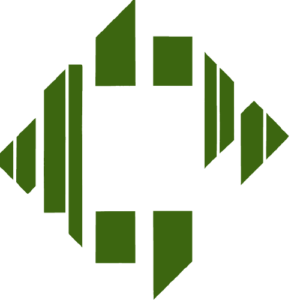“How to Start Writing Golang Code Today”
Are you ready to learn a new programming language and take your coding skills to the next level? Go is a powerful, open-source language that’s gaining traction among developers everywhere. Discover how you can start writing Golang code today with this comprehensive guide!
Introduction
Golang (or Go) is an open-source, statically typed programming language developed by Google in 2009. It is a compiled language, meaning it compiles code from source code into machine code that can be executed on any platform. Go has been designed with the goal of creating programs that are both efficient and easy to write. The language has gained popularity for its simplicity, readability, and performance. It offers powerful features such as memory management, garbage collection, and concise syntax. Additionally, Go supports concurrency and threading, two features that make it a great choice for designing modern web applications. In this article, we will explore the necessary tools and installation instructions to get started using Go, as well as tips for writing Go code effectively and best practices for debugging and packaging Go code. Finally, we will provide several resources for further exploring the language and improving your coding skills.
Necessary Tools and Installation Instructions
Go is an open-source programming language with a rich ecosystem of tools and resources that enable developers to quickly and efficiently build powerful applications. Installation of the Go programming language is simple and only requires a few steps in order to get up and running with Go development. After installation, it is important to configure your environment so that it is comfortable for writing Go code.
You can use any preferred text editor or Integrated Development Environment (IDE) to write Go code – popular choices are Visual Studio Code, JetBrains’ Goland IDE, Atom, Sublime Text, Vim, and Emacs. Once you have installed the golang packages for your desired text editor or IDE, you should download the latest version of Go from the official website and install it on your computer. Then you should be comfortable setting up your environment by setting up paths, adding necessary files such as $GOPATH/bin, etc into your PATH variable on Windows or ~/.bash_profile on macOS and Linux systems.
Furthermore, understanding the go command line tool is essential for properly configuring your Go environment – it allows you to download and manage packages easily as well as set environment configuration variables like GOOS and GOARCH which are important when building programs with Go. Finally, completing these steps will enable you to write Golang code in any of your favourite tools or IDEs.
Once you have finished setting up your environment properly, you will be ready to start writing code in Golang! All the necessary tools and instructions can help you get going quickly and start writing robust applications with this powerful programming language. With only a few steps needed to configure your environment correctly and understand the go command line tool, there’s no reason why you shouldn’t begin coding with Golang today!
Tips for Writing Go Code
When writing Go code, it is important to pay close attention to the names assigned to variables, functions, and files. Names should be meaningful and concise in order to make your code more understandable for other developers. Indentation is also key for keeping similar blocks of code together and making your code more readable. It is beneficial to use comments to explain the intent and purpose of different sections of your code – this can save time by not having to decipher what the code does later on.
Another good practice for organizing your code is to group related functions together. This makes it easier to locate related tasks and modify them quickly when necessary. Additionally, data types should always be declared explicitly when writing Go code – this helps to ensure accuracy when reading or executing the code. Failing to do this can lead to unexpected results or errors.
Overall, there are many steps that can help make writing Go code easier and more efficient. Using meaningful names for variables, functions, and files allows other readers of the code to understand its purpose quickly. Additionally, proper indentation keeps related blocks of code organized and increases readability. Additionally, comments should be included throughout the code so that the intent and purpose of each function is clarified. Grouping related functions together can also aid in streamlining the coding process by keeping related tasks in one location. Finally, data types should always be declared explicitly as it ensures accuracy when reading or executing the code. Taking these steps when writing Go code will help ensure optimal results from your program.
Debugging Best Practices
Go’s compiler provides extensive debugging features that make it easier to find errors and ensure the code works as expected. To identify errors early on it is important to use tools like linting to check code style and analyze programs for potential issues while they are being written. Additionally, using consistent naming conventions for variables, functions, and files will improve the readability and maintainability of the code. It is also helpful to create meaningful comments to document the code, which will make debugging easier in the future.
To aid in debugging, it is important to identify potential problems before they become actual errors. Using logging statements throughout your program will help you track down errors quickly when they occur. Logging statements should be used sparingly at appropriate levels of detail so that you can easily isolate the source of an error without having too much noise in the logs. It is also beneficial to use a source control system like git to track changes over time and roll back previous versions if necessary.
When debugging a program manually, it is best practice to approach the problem systematically. Start by examining the code line by line and look for any potential errors or logic flaws that may have been introduced while writing the code. If there is something wrong with the syntax of the code, most compilers will provide helpful error messages that point you in the right direction. Once you have identified an issue, you should use a debugger tool provided by your programming environment to step through code execution and watch the values of variables as the program runs. This will help you identify where exactly in the code the bug originates from, which can make fixing it much easier.
In conclusion, debugging best practices in Go requires thoughtful organization and the use of tools from both within and outside of Go itself. Identifying and fixing errors early will save time and reduce frustration when debugging Go code. By using consistent naming conventions for variables, functions, files and comments; employing logging; utilizing tools such as linting; tracking changes with source control systems; and manually debugging systematically, developers can effectively debug their Go code quickly and efficiently.
Packaging and Deploying Go Code
When writing in Go, packaging and deploying code is of utmost importance for successful program output. Fortunately, the language provides a number of helpful tools for making this process fast and efficient. Most notably, .zip files are a convenient way to package Go code by compressing all the source files into a single structured file for easy distribution. Additionally, packages are used to organize functionality and share code between programs, affording developers more modular development and easier implementation of existing code.
The ‘go get’ command is especially useful when it comes to packaging and deploying Go code. This command allows you to quickly download and install third-party packages into your Go workspace, or you can use it to install packages from your own repositories. This makes it easy to establish various levels of control over how you package your code, while also keeping in mind the security implications of opening up public repositories.
Finally, version control systems like Git can be used to manage multiple versions of code over time. These tools help you establish a workflow that permits improved collaboration between team members and encourages best practices with regards to code management. Because Git stores changes as commits and allows for easy reverting back to earlier versions, it reduces the risks associated with data loss due to unforeseen circumstances.
In conclusion, when working with Go programming language, effective packaging and deployment are crucial factors for success. The language provides several useful tools for making this process easier, such as .zip files for compression, ‘go get’ command for downloading packages and version control systems like git for managing multiple versions of code over time. All these powerful tools make packaging and deploying your Go code much smoother than other languages.
Further Resources for Exploring Go and Improving Coding Skills
There are many valuable resources developed by the Go community designed to help developers learn and improve their skills. The official Golang website (https://golang.org/) is an excellent place to start, providing official documentation, tutorials, and a wealth of other information. Additionally, Go blogs such as Dave Cheney’s blog (https://dave.cheney.net/), the Go newsletter (https://golangweekly.com/), and other community sites can provide helpful advice and additional learning opportunities.
Online tutorials and video courses offer more in-depth instructions on the syntax, data types, and core concepts of the language. Tutorials such as the “Learn X in Y Minutes” series (https://learnxinyminutes.com/docs/go/) provide a great way to quickly brush up on the basics of the language. Additionally, there are various Udemy courses (https://www.udemy.com/topic/go-programming-language/) available that can help you dive deeper into the world of Go development.
Open source projects can provide a great opportunity to collaborate and hone coding abilities with peers or even industry experts. GitHub has a variety of repositories dedicated to Go development (https://github.com/golang) that beginners and experienced developers alike can use to contribute or learn from others. Additionally, there are plenty of opportunities available for developers to work on real-world projects supported by the Go team at Google (https://opensource.google/projects/go).
Finally, professional development conferences and workshops provide a platform to learn from industry experts and build relationships with colleagues in the field of software development. Conferences such as GopherCon (http://www.gophercon.com/) offer a great way to stay up to date on the emerging trends in Go development and connect with like-minded individuals in the industry who are passionate about the language. Additionally, both local meetups and online communities offer an ideal space for developers to network with peers who are already working on their own projects or simply exploring new ideas for future endeavors in this space.
In conclusion, if you want to learn how to write code in Go, then there are many valuable resources available across a variety of platforms created by both experienced developers and industry professionals alike that can help you get started writing code today!
Conclusion
Go is a powerful programming language that provides many advantages to developers, such as scalability and speed. Writing Go code requires knowledge of the necessary tools, installation instructions, and syntax. Plus, there are best practices for debugging, packaging and deploying programs. For further exploration of the language and improvement of coding skills, there are multiple resources available online.
By following the step-by-step tutorial provided in this article, readers should have the information they need to begin writing Go code today. This tutorial discussed the importance of golang and the benefits it has over other programming languages. It also demonstrated how to use it and detailed the syntax on how the data types can be used. Naming standards for variables, functions, and files were also established as well as suggestions for adding comments to golang code.
The Go programming language is an efficient and effective language to use when developing applications. By utilizing the tips provided in this article, anyone can start writing Go code today with confidence.
Start writing Go code today with the help of this guide! With the right tools, installation instructions, and tips, you can have the basics of the language mastered within no time. Debugging best practices and efficient packaging and deploying of Go code ensures that your code is reliable and effective. Furthermore, take advantage of the additional resources available to continuously improve your coding skills and explore the language. Start writing code in Go today and discover the powerful capabilities of this language!




Leave a Reply
Want to join the discussion?Feel free to contribute!